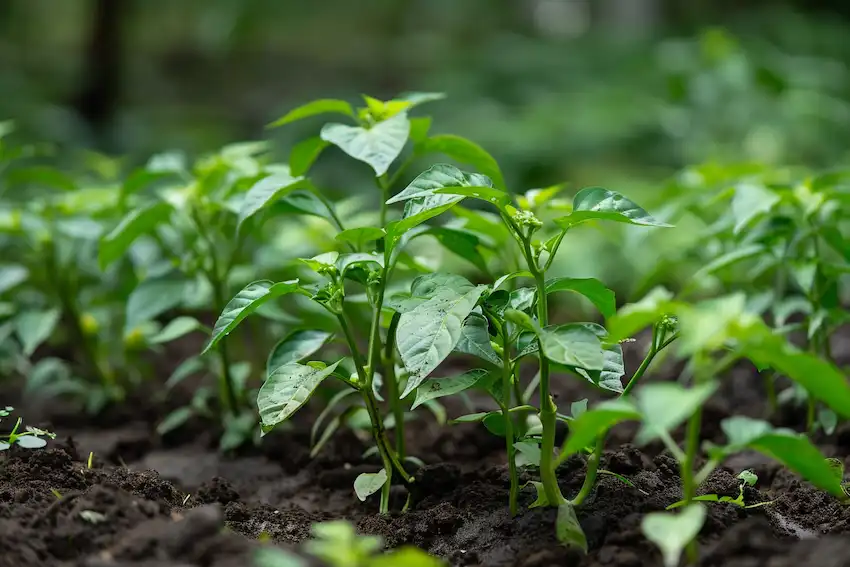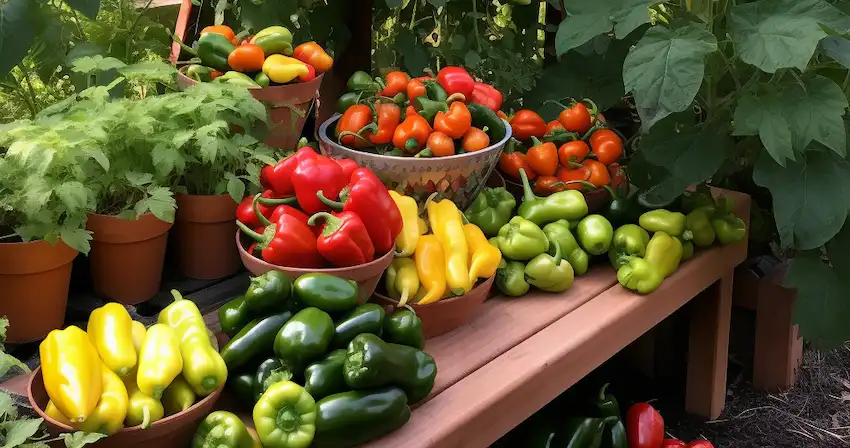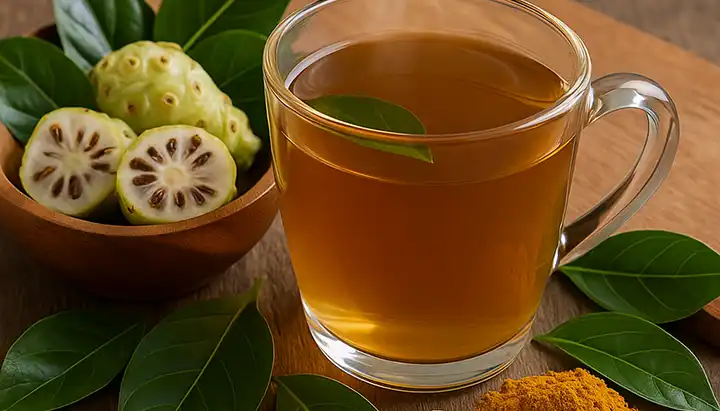How and When to Prune Peppers for Maximum Production
Pruning pepper plants can significantly enhance their health, yield, and overall quality. Although it may seem counterintuitive to cut back your plants, strategic pruning encourages more robust growth and increased fruit production. This article provides a comprehensive guide on how and when to prune pepper plants to achieve maximum production.

Why Prune Pepper Plants?
Enhanced Air Circulation
Pruning pepper plants improves air circulation, reducing the risk of fungal diseases. Better airflow allows leaves to dry more quickly after rain or watering, minimizing the potential for disease.
Increased Sunlight Penetration
By removing excess foliage, more sunlight reaches the inner parts of the plant. This ensures that all leaves can photosynthesize efficiently, boosting the plant’s energy production and overall growth.
Encouraged Bushier Growth
Pruning encourages pepper plants to grow bushier rather than taller. This results in a more compact plant with more branches, which can produce more flowers and, subsequently, more peppers.
Better Fruit Quality
Pruning helps the plant focus its energy on developing larger, healthier fruits instead of producing excessive foliage. This leads to better quality peppers in terms of size, flavor, and texture.
When to Prune Pepper Plants
Early Growth Stage
The best time to start pruning pepper plants is during the early growth stage, typically when the plant is about 6-8 inches tall and has at least 4-6 true leaves. Early pruning helps shape the plant and establish a strong foundation for future growth.
After the First Fruits Set
Once the first set of fruits has formed, a light pruning can be beneficial. This helps the plant redirect energy from foliage to fruit development. Be cautious not to over-prune at this stage, as the plant still needs enough leaves to support photosynthesis.
Mid to Late Growing Season
Throughout the growing season, you can perform light pruning to remove any damaged, diseased, or overcrowded branches. This maintenance pruning helps keep the plant healthy and productive.
Before the End of the Season
About a month before the expected first frost, consider topping off the plants to encourage the final set of fruits to mature. This involves cutting off the top growth to stop the plant from producing new flowers and focus on ripening the existing fruits.
How to Prune Pepper Plants

Gather Your Tools
Before you start pruning, make sure you have the right tools:
- Sharp pruning shears or scissors
- Gloves to protect your hands
- Disinfectant (such as rubbing alcohol) to sterilize your tools
Early Pruning Steps
- Remove Early Flowers: When the plant is young and has about 6-8 true leaves, pinch off any early flowers. This encourages the plant to focus on establishing strong roots and foliage before fruiting.
- Top the Plant: Once the plant reaches about 6-8 inches in height, pinch or cut off the topmost growing tip. This encourages the plant to branch out and become bushier.
Mid-Season Pruning
- Identify Suckers: Suckers are the small shoots that grow in the junction between the main stem and the branches. Remove these suckers to prevent overcrowding and improve airflow.
- Thin Out Foliage: Remove any leaves that are touching the ground or crowding the center of the plant. This helps reduce the risk of disease and ensures that sunlight can penetrate the entire plant.
- Prune Damaged or Diseased Branches: Regularly inspect your plants for any damaged or diseased branches and remove them promptly to maintain plant health.
Late-Season Pruning
- Top Off the Plants: About a month before the first expected frost, cut off the topmost growth. This stops the plant from producing new flowers and focuses its energy on ripening the existing fruits.
- Remove Remaining Flowers: If the plant still has flowers or small, undeveloped fruits, consider removing them to help the existing peppers mature before the end of the season.
Additional Tips for Pruning Pepper Plants
Consistent Pruning
Regular pruning throughout the growing season helps maintain plant health and productivity. Avoid heavy pruning, as it can stress the plant. Instead, focus on light, consistent pruning to encourage steady growth.
Fertilization
After pruning, give your pepper plants a boost with a balanced fertilizer. Look for a fertilizer with equal parts nitrogen, phosphorus, and potassium to support overall plant health. Organic options like compost or fish emulsion can provide a slow-release source of nutrients. Learn more about cultivating robust tomatoes and peppers.
Watering
Maintain consistent watering practices to keep your pepper plants healthy. Peppers need regular, deep watering to develop strong roots and produce juicy fruits. Avoid overhead watering to reduce the risk of fungal diseases, and consider using drip irrigation or soaker hoses.
Pest Management
Monitor your plants regularly for signs of pests such as aphids, spider mites, and caterpillars. Use organic pest control methods like neem oil, insecticidal soap, or introducing beneficial insects to keep pest populations in check.
Mulching
Apply mulch around the base of your pepper plants to help retain moisture, suppress weeds, and regulate soil temperature. Organic mulches like straw or grass clippings can also add nutrients to the soil as they decompose.
Supporting the Plants
As your pepper plants grow, they may need support to keep the branches from breaking under the weight of the fruit. Use stakes, cages, or trellises to provide support and prevent damage. For more tips, explore 7 amazing secrets to grow peppers faster, bigger, and better.

Pruning pepper plants is a valuable technique for maximizing production and ensuring healthy, robust plants. By understanding when and how to prune, you can enhance air circulation, improve sunlight penetration, encourage bushier growth, and produce better quality fruits. Regular, consistent pruning combined with proper care practices like fertilization, watering, and pest management will help you achieve a bountiful harvest of delicious peppers. For more expert advice, check out how to grow bell peppers upside down and how to grow jalapeno peppers without soil.
For further reading and expert advice, consider consulting gardening books, university agricultural extensions, and reputable gardening websites. These resources can provide additional insights and tailored recommendations for your specific growing conditions and pepper varieties.
Happy gardening!Inspired by this? Share the article with your friends!



















